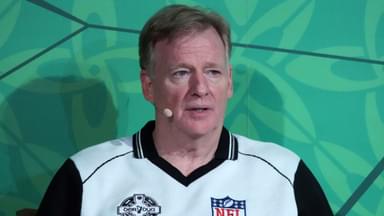The NBA has used a lottery system to determine the draft order for non-playoff teams since 1985. The NBA assigns 1,000 of the 1,001 possible combinations—generated by drawing four balls from a set of 14 numbered ones—to the 14 teams that miss the postseason, based on their odds. The three teams with the worst records each receive a 14% chance of landing the No. 1 overall. These combinations determine the first four selections in the draft.
Advertisement
After the top four picks are decided, the remaining teams select in order from fifth to fourteenth, based on reverse regular-season standings.
In contrast, the NFL does not use a lottery system. Instead, the draft order is strictly based on team records. The team with the worst regular-season record receives the first overall pick, while the rest follow in ascending order of performance. The Super Bowl champion always selects last in the first round, with the 32nd overall pick.
Should the league switch to a lottery system for the draft? It’s a question that occasionally resurfaces — and with the NFL owners’ meetings currently underway in Minneapolis, many are anticipating a wave of potential changes, including tweaks to playoff seeding, a possible ban on the “tush push,” and other rule adjustments. But when it comes to altering the draft format, NFL insider Tom Pelissero doesn’t see a shift to a lottery system happening anytime soon.
Speaking to Rich Eisen, Pelissero explained that while the topic might come up in discussions, the NFL is fundamentally different from the NBA. In basketball, tanking — or deliberately losing to improve draft position — is more feasible.
“I don’t think so. The worst teams don’t have that instant turnaround. It’s hard for me to imagine in a sport that frankly lot harder to tank than the NBA. It’s hard to tank, it really is, because the coaches and players are not thinking in that regard. You cannot just roll out your 12th man to jack up 20 three’ at the end of the game. There are injury situations, it’s a dangerous game. “
Pelissero also noted that the culture in the NFL doesn’t support intentional losing. Coaches and players aren’t benching starters just to gain a draft advantage — the standards are too high, and the stakes are too serious. For now, there’s no strong reason for the league to abandon its current system.
However, there is certainly going to be another open discussion about the NFL’s pushing and pulling rules, which could determine the fate of the Eagles’ signature play.
Could the NFL ban the Tush-Push?
While a shift to the lottery system may not be in the NFL’s immediate future, league owners are set to vote on another hot topic that’s stirred controversy in recent seasons: the Eagles’ “tush push.” Philadelphia has perfected this short-yardage quarterback sneak, but not all teams find it thrilling, especially the Packers, who believe the play gives the offense an unfair edge.
Their argument? If defensive players aren’t allowed to push or pull their teammates along the line of scrimmage, then offensive players shouldn’t be allowed to do so either. Allowing one side to leverage that advantage while restricting the other, they argue, creates an imbalance.
According to NFL insider Tom Pelissero, there are compelling arguments both for and against banning the tush push, and the debate among owners has been extensive. He notes there’s a real possibility that the league could introduce changes to the current rules on pushing and pulling—regulations that have been off the books for nearly two decades.
“They are having active conversations about that. There certainly have been strong feelings on both sides of the argument here. We got to see what the final language is going to be. That’s going to make an impact on exactly what owners are or are not willing to do. There have been talks about reviving the rule about pushing or pulling.”
Before 2005, the NFL banned teammates from pushing or pulling the ball carrier. However, the rule proved difficult to enforce because officials struggled to distinguish between a push and a pull during live action downfield. As a result, the league eliminated the restriction in 2006, unintentionally giving the offense a permanent edge, especially since defensive players remain prohibited from doing the same.
The NFL traditionally avoids rule changes that appear to target a specific team or strategy. To counter that, the Packers proposed a broader rule reinstatement: bringing back the ban on pushing or pulling the ball carrier, thereby eliminating the tush push without naming names.








